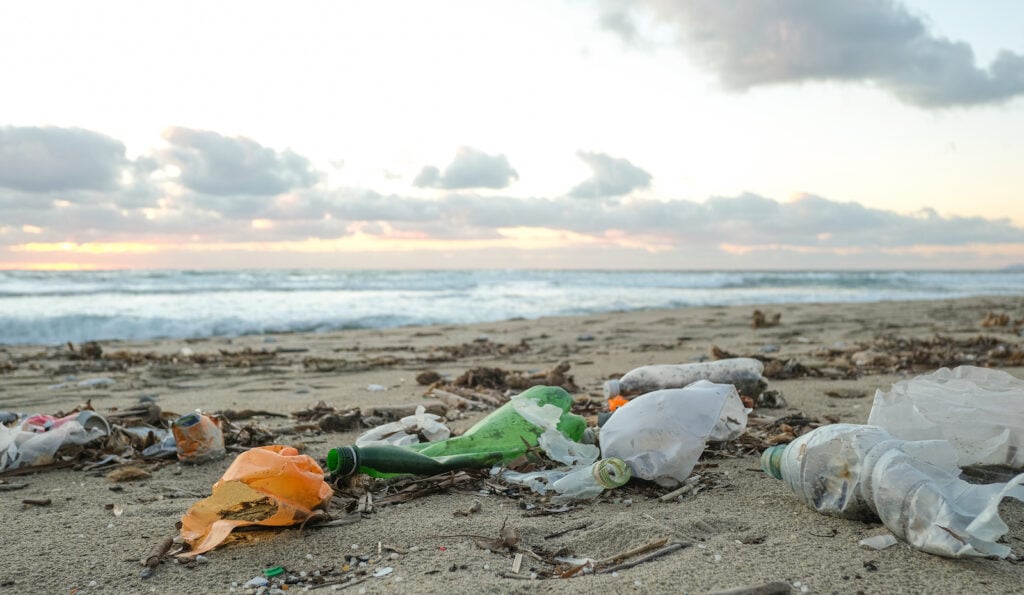Scientists and the Military Want to Solve World Hunger with Food Made from Plastic
Plenty of smart people have offered viable solutions for dealing with the plastic pollution crisis. You might think our researchers and military would study practical ways to drastically reduce our plastic creation and consumption.
Instead, they want us to eat it.

“DARPA-funded research seeks to tackle the climate crisis and global hunger by producing a protein powder from plastic and bacteria,” reports Vice in an article from October 2022.
Food Made from Plastic?
At Stephen Techtmann‘s lab at Michigan Technical University, “bacteria with hardy ‘stomachs’ are being treated like microbial guinea pigs, chomping down on processed plastic to churn out an edible, protein-rich byproduct.”
This project – the Biological Plastic Reuse by Olefin and Ester Transforming Engineered Isolates and Natural Consortia is partly funded by DARPA. The Defense Advanced Research Projects Agency (DARPA) is a research and development agency of the U.S. Department of Defense responsible for the development of emerging technologies for use by the military.
Vice reports that Techtmann’s team has so far created “small amounts of this protein powder, which no one has yet taste tested but, he said, smells fairly yeasty and aromatic like Vegemite.” The powder (named BioPROTEIN) contains protein and lipids and will most likely be enriched with vitamins and minerals.
This graphic walks through the process of creating this plastic protein powder. And just to be clear, consumers won’t technically you be eating plastic. They’ll be eating the cells produced when bacteria feed off the plastic.

Yes, the plastic problem needs a solution.
We generate roughly 400 million tons of plastic annually. Creating plastic requires large amounts of fossil fuels, namely crude oil.
And plastic is everywhere. Single use plastic items can travel great distances by the wind alone, having a far greater reach of contamination than their size would indicate.
Animals also mistake single use plastic as food and can choke or become fatally ill from toxins — such as BPA, flame retardants, and PVC — as well as from other chemicals it soaks up.
Yes, world hunger needs a solution.
One in nine people in the world is chronically hungry, according to the U.N. Food and Agriculture Organization. At the same time, 1.3 billion tons of food (about one-third of all food produced for human consumption) is lost or wasted every year.
We need a variety of ways to address it. One of the best ways is to empower people to be more self-sufficient in growing their own food. There’s plenty of science showing the benefits of regenerative agriculture on both human health and planet health.
Regenerative agriculture provides a pathway to an abundant and resilient future by shifting from a narrative of human dominion to one of healing our relationship with the Earth. Regenerative refers to farming, ranching and pastoral practices that contribute to stabilizing the planet’s climate and carbon cycles by rehabilitating organic matter in soil, thereby increasing carbon storage, retaining moisture, and safeguarding biodiversity and living systems.
But is plastic protein powder the answer?
Technology impacts our lives in countless ways. And many of them are positive.
But there are loads of downsides like tech addictions in kids and EMF concerns just to name a few. And sometimes we get so caught up in what tech can do that we lose common sense.
Which one sounds like the key to overall health and environmental balance —
Following indigenous, back to the land practices for real food that supports the planet?
or
Eating ocean plastic byproducts?
